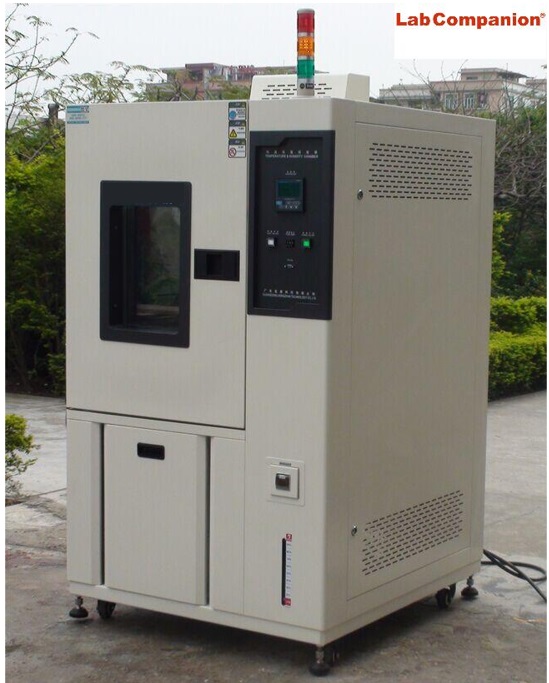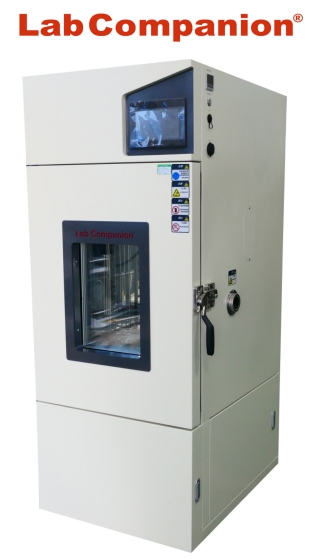High, low temperature, and low pressure test chamber
The low-pressure test chamber is mainly used in the fields of aviation, aerospace, information, electronics, etc., to determine the environmental adaptability and reliability tests of instruments, electrical products, materials, components, and equipment under single or simultaneous effects of low-pressure, high-temperature, and low-temperature, and to measure the electrical performance parameters of the test piece when energized.
Product principle and function
The high, low temperature, and low pressure test chamber is mainly used in aviation, aerospace, electronics, national defense, scientific research, and other industrial sectors to determine the storage and transportation reliability test of electrical and electronic products (including components, materials, and instruments) under the single or simultaneous action of high, low temperature, and low pressure. It can also be used to test the electrical performance parameters of the specimens when they are energized.
Editing of structural device for high, low temperature and low pressure test chamber
1. The outer shell is made of cold-rolled steel plate sprayed with plastic or stainless steel, and the inner shell is made of stainless steel
2. Thermal insulation layer: ultra-fine glass wool and hard polyurethane
3. Cooling method: Compression cooling method (air-cooled condenser)
4. Refrigerator: Original French Taikang fully enclosed compressor unit
5. Heater: grade stainless steel fin heater
6. Convection system: Multi blade fan, air conditioning dedicated motor
7. Temperature controller: Digital intelligent temperature controller, using PT-l00 sensor for temperature control.
8. The arrangement of electrical components in the control cabinet is reasonable, the wiring is neat, and labeled sheathed wiring terminals are used.
9. Castor solenoid valve, Danfoss expansion valve
10. High quality vacuum pump
Editing of vacuum system for high, low temperature and low pressure test chamber
1. Composition of vacuum system: The vacuum system is a component that obtains and measures the vacuum degree, consisting of a vacuum measurement system and a vacuum acquisition unit
2. Vacuum measurement: Vacuum measurement is carried out using a pressure sensor. This vacuum gauge uses pressure strain to achieve vacuum measurement, and the measurement data is a linear electrical signal that can be directly input into the device controller for display and control
environment condition
Temperature: 5 ℃~+28 ℃ (average temperature within 24 hours ≤ 28 ℃)
Relative humidity: ≤ 85% RH
Air pressure: 86kPa~106kPa
Power supply conditions: three-phase four wire+protective ground wire, voltage range: AC (380 ± 38) V
Allowable frequency fluctuation range: (50 ± 0.5) Hz
The grounding resistance of the protective grounding wire is less than 4 Ω
Technical specifications of high, low temperature and low pressure test chamber
1. Studio size:
FA-4 4 cu ft (113L)
-73°C to +177°C
N/A
FA-10 10 cu ft (283L)
-73°C to +177°C
20% to 95%RH
FA-16 16 cu ft (453L)
-73°C to +177°C
20% to 95%RH
FA-35 35 cu ft (991L)
-73°C to +177°C
20% to 95%RH
FA-64 64 cu ft (1812L)
-73°C to +177°C
20% to 95%RH
FA-96 96 cu ft (2718L)
-73°C to +177°C
20% to 95%RH
2. Temperature range: -40~150 ℃
3. Temperature deviation: ± 2 ℃
4. Temperature fluctuation: ± 0.5 ℃
5. Temperature uniformity: ≤ 2 ℃
6. Air pressure level: 4-84kpa
7. Heating rate 1.0-3.0 ℃/min
8. Cooling rate 0.7-1.0 ℃/min
9. Control system controller Siemens PLC controller, Siemens color LCD display touch screen
10. Accuracy Range Setting Accuracy: Temperature ± 0.1 ℃, Indication Accuracy: Temperature ± 0.1 ℃, Resolution: ± 0.1 ℃
11. Temperature sensor platinum resistance PT100 Ω/MV
12. Pressure Sensor Electronic Pressure Transmitter
13. Fully independent heating system, nickel chromium alloy electric heating heater
14. Refrigeration system: original French "Taikang" fully enclosed air-cooled single-stage/cascade compressor refrigeration method
15. Temperature resistant and low-noise air conditioning motor for circulation system. Multi blade centrifugal fan
Safety protection device
1. Overload and short circuit protection
2. Overtemperature protection
3. High and low pressure protection of refrigeration unit
4. Alarm sound prompt
Description of Controller Q8-902 for High Low Temperature and Low Pressure Test Chamber
Operating interface
Touchscreen Chinese interface, with digital display, real-time curve, operation selection, timing setting, program setting, alarm, parameter setting and other interfaces
Curve recording function
Can save the set values, sampling values, and sampling time of the device; The maximum storage time is 30 days. Simultaneously storing 5 real-time curves with different capacities and resolutions for 30 days, 7 days, 24 hours, 8 hours, and 1 hour, and displaying real-time data to meet different user needs
Printing function
Connectable micro printer (optional)
Program capacity
Program: Up to 30 curves
Program segment: Each program can have up to 50 segments (total program segment 1200 segments)
Program segment grouping: Each curve can be further grouped into segments according to any continuous segment, up to a maximum of 10 segments can be combined, and segments are allowed to overlap
Internal loop: The program segments within the program are looped in sections as the minimum loop unit, with a maximum of 99 loops per section
Program loop: can loop up to 99 times
Program connection: After the program runs, it can connect to the selected next program
Related standards
In addition to the content specified in this technical requirement, the equipment meets the requirements of GB/T10591 and GB/T10592.
Data and Services
1. Provide technical information such as electrical schematics, consumable parts lists, operation and maintenance manuals for the equipment, as well as technical information for the main purchased supporting parts.
2. Train 1-2 equipment operation and maintenance personnel to fully master the operation skills and general repair and maintenance skills of the equipment.
Within one year from the date of acceptance of the equipment, free after-sales service shall be provided to the buyer, and after one year, accessories of the equipment shall be provided to the buyer at cost price.










